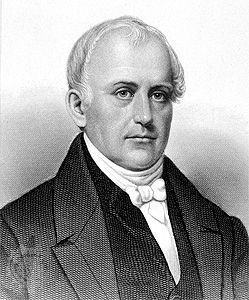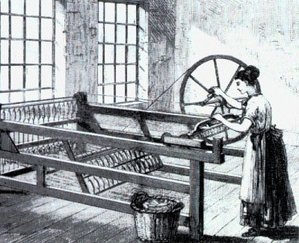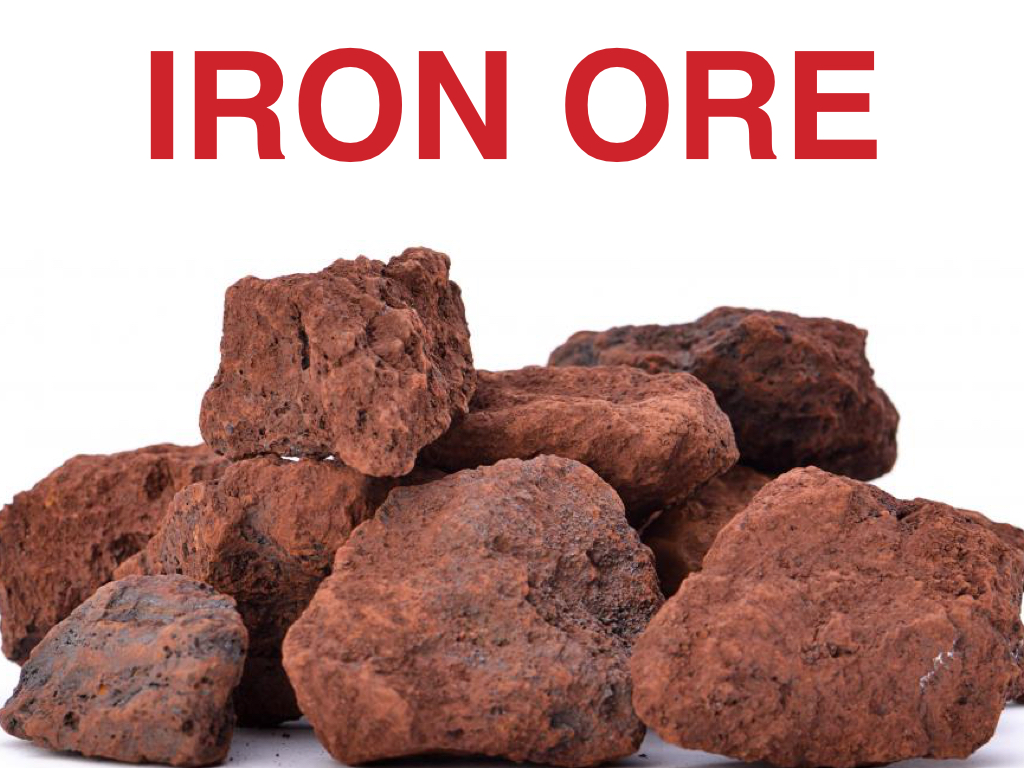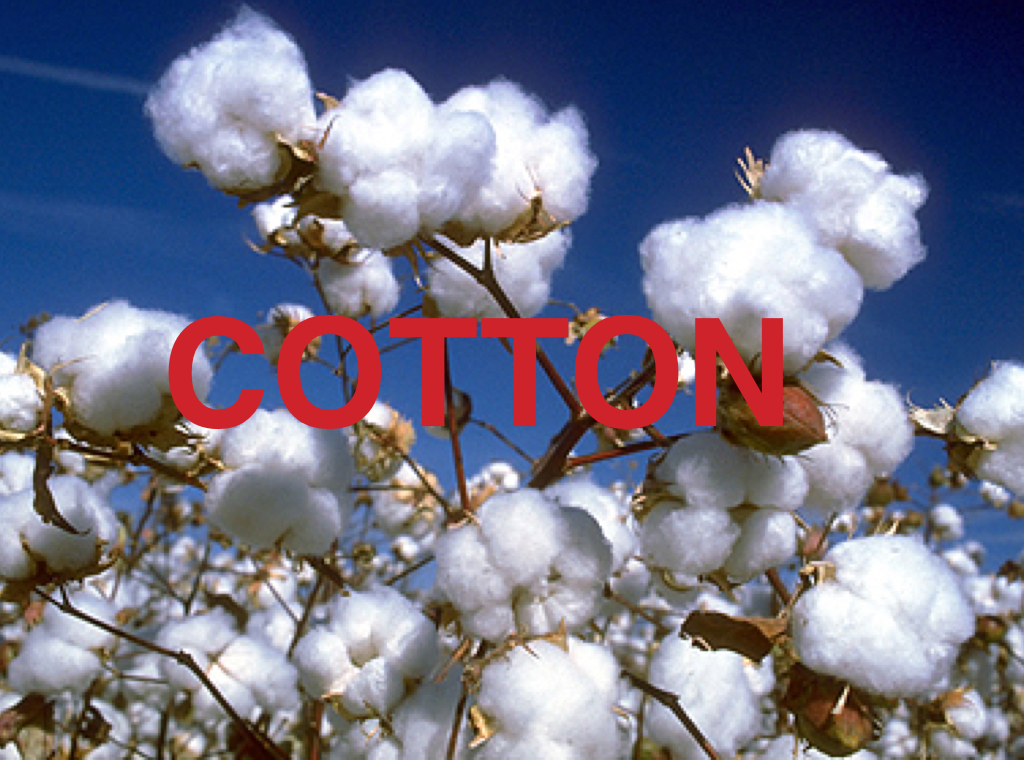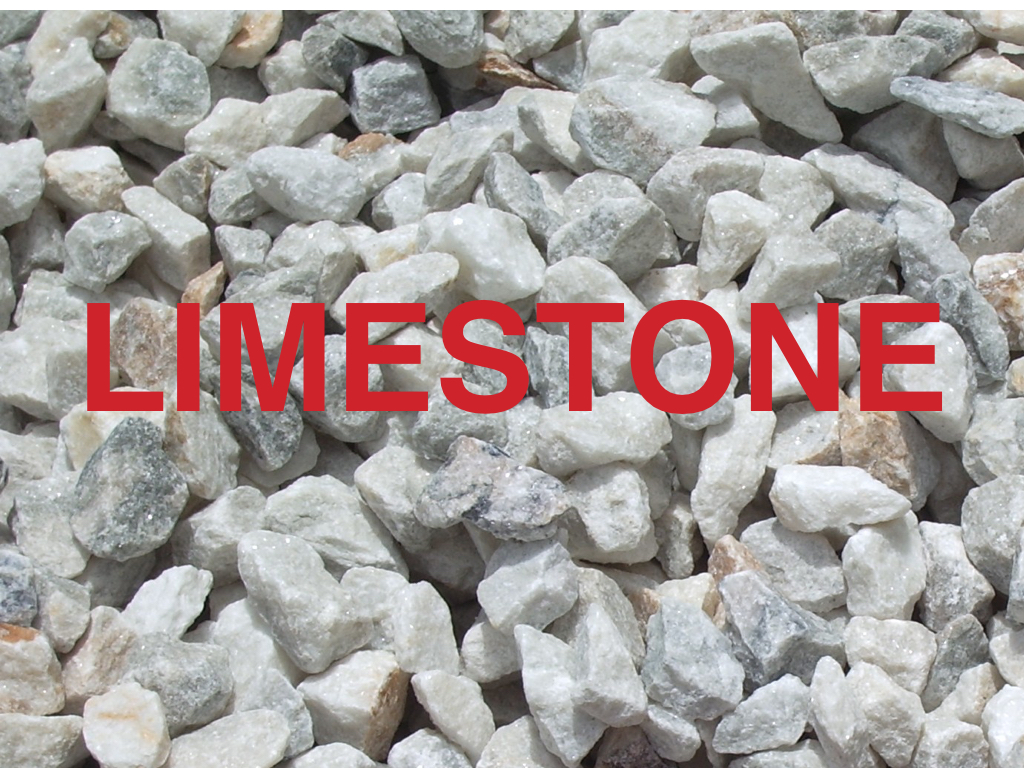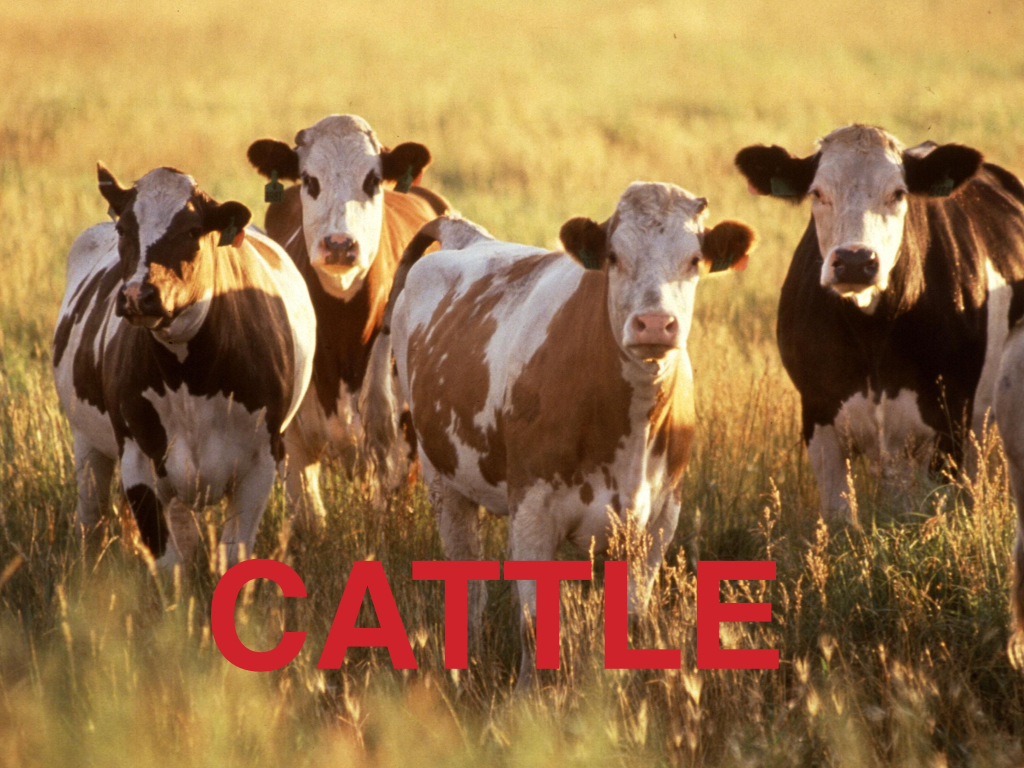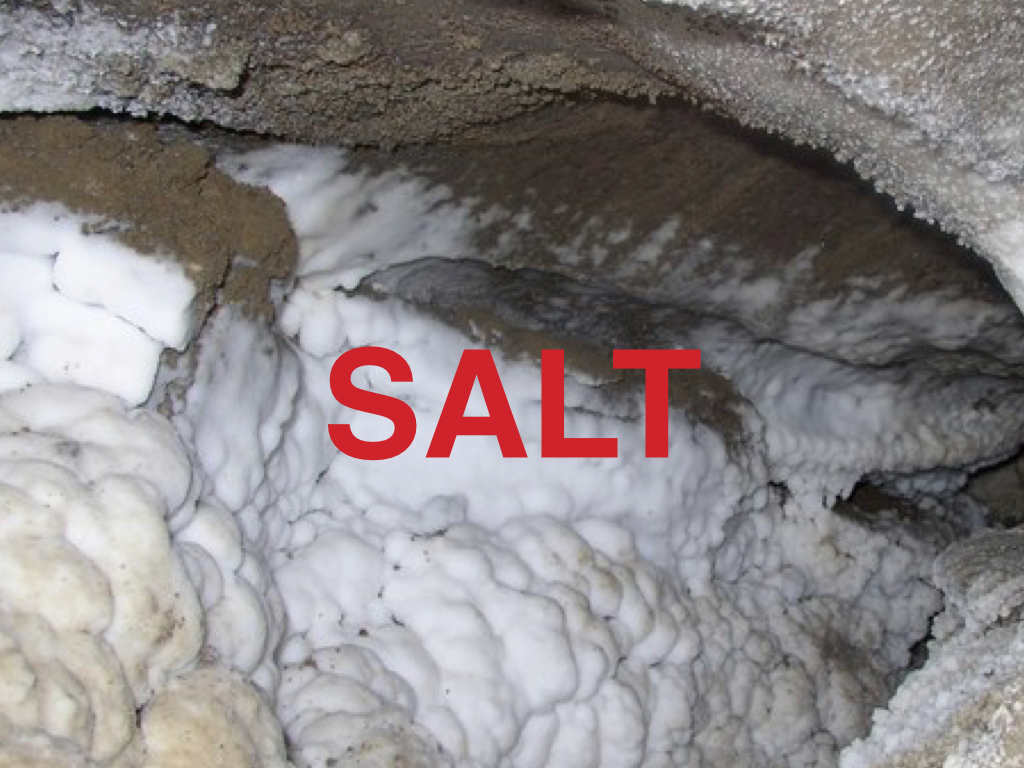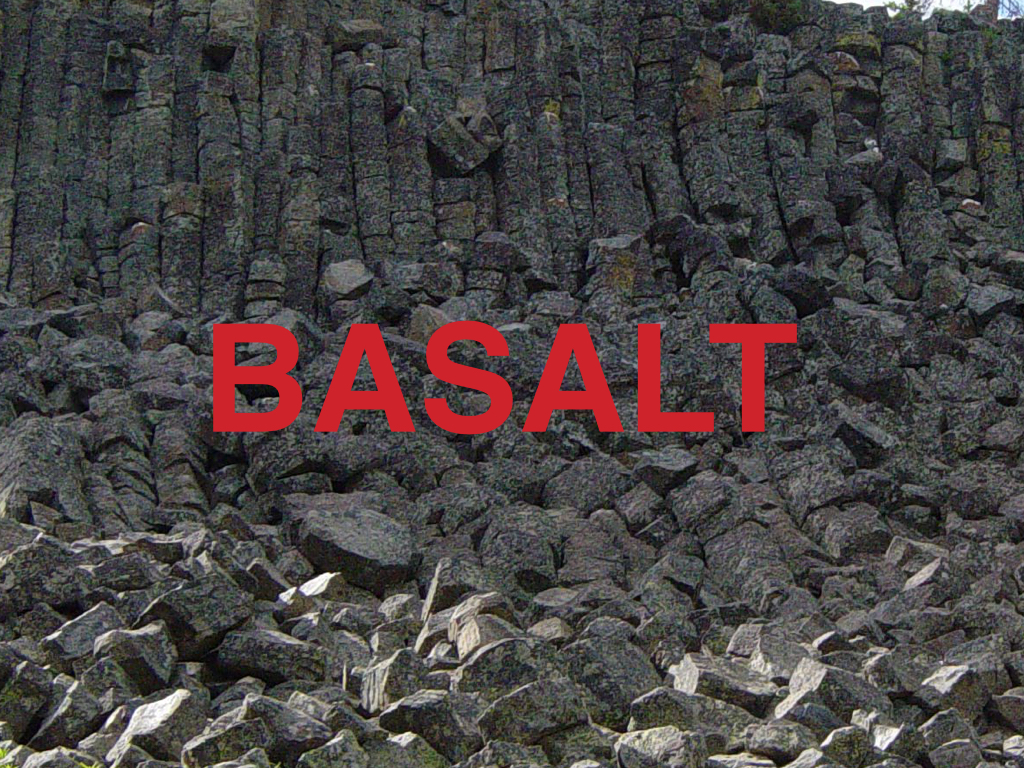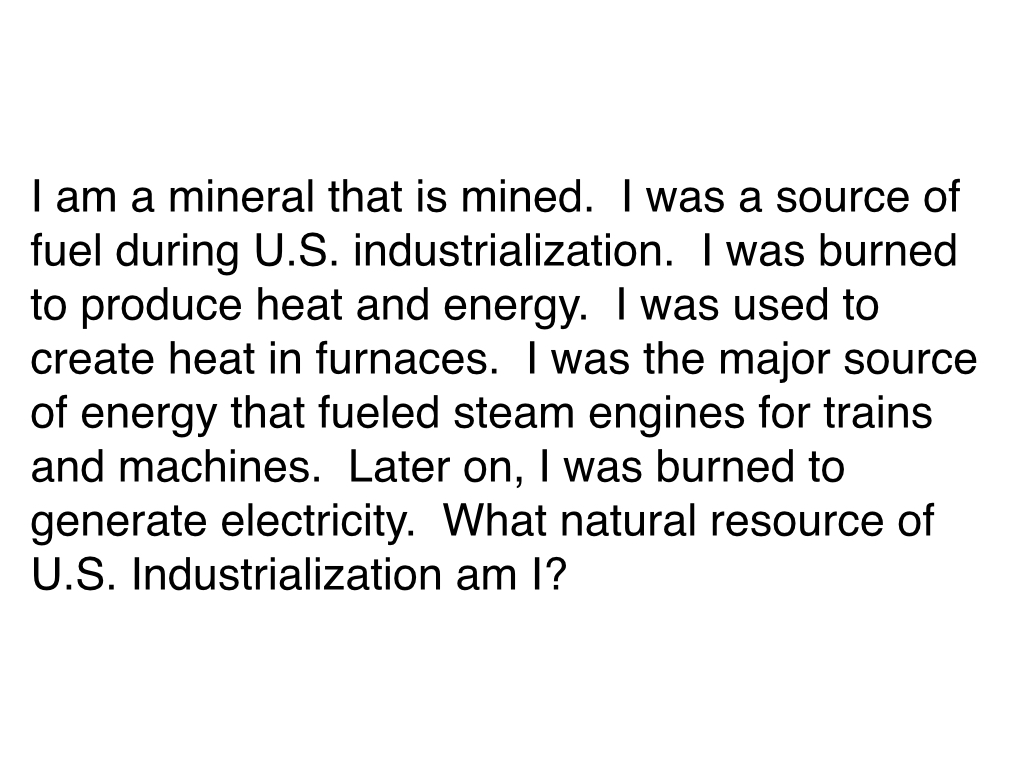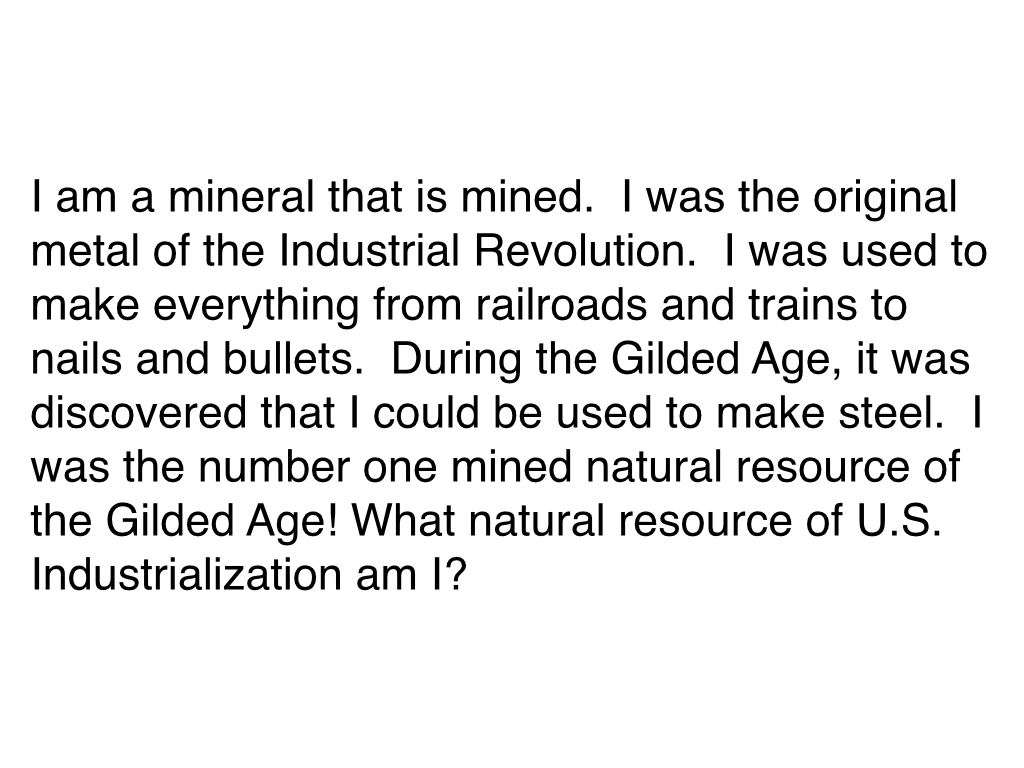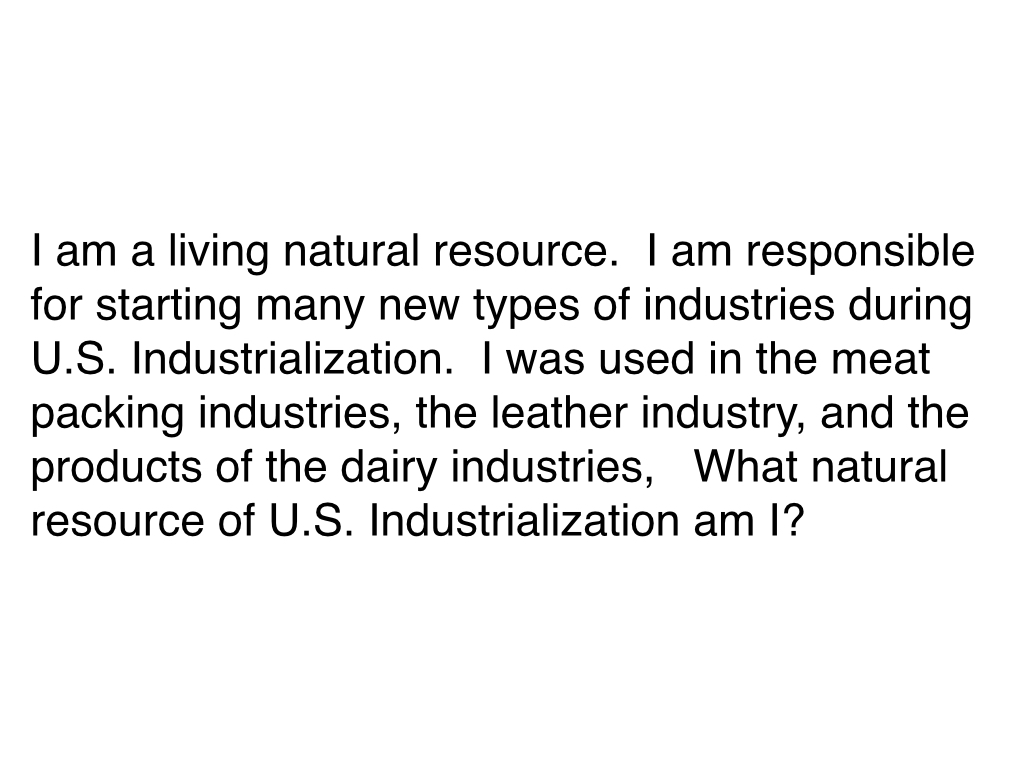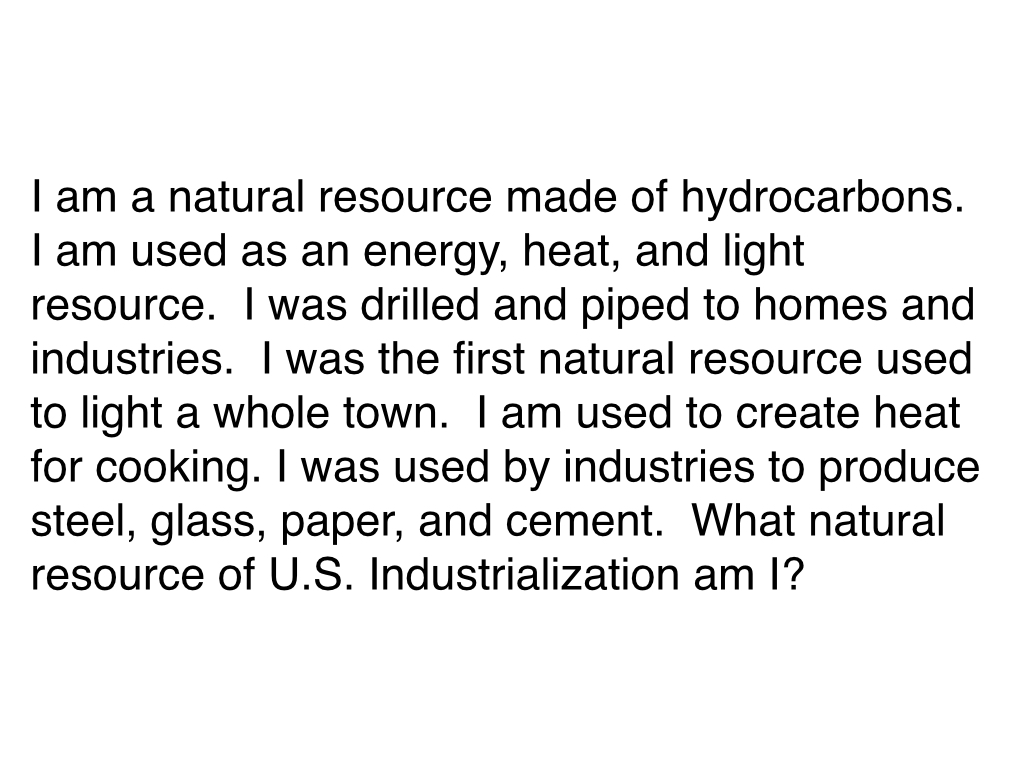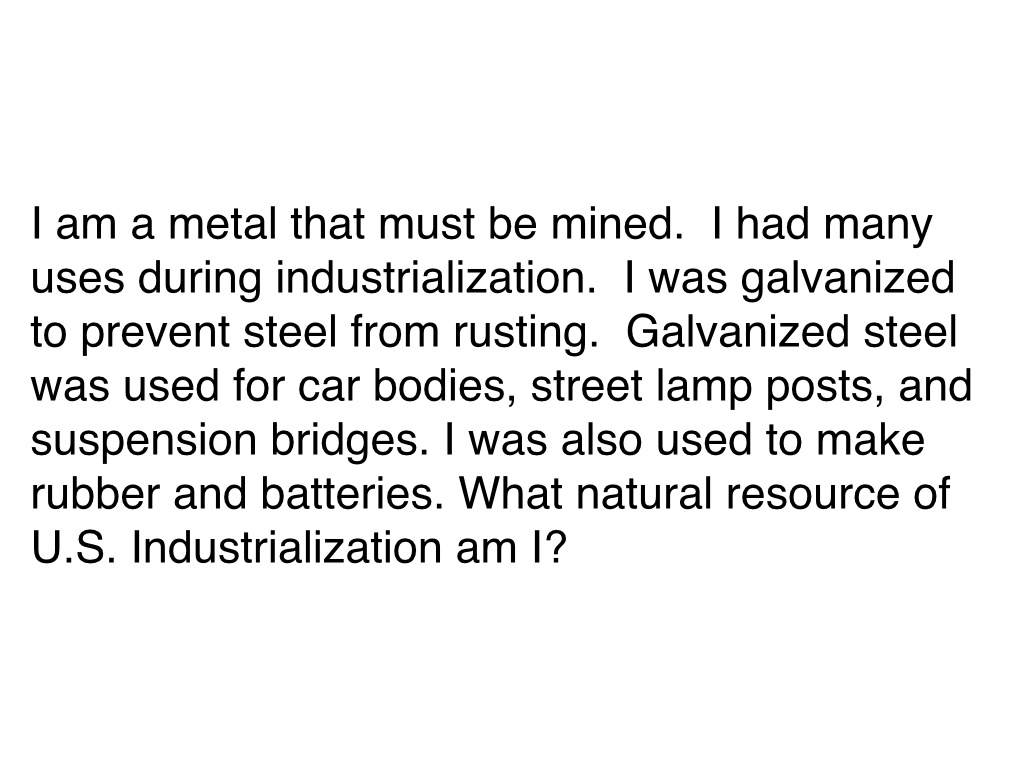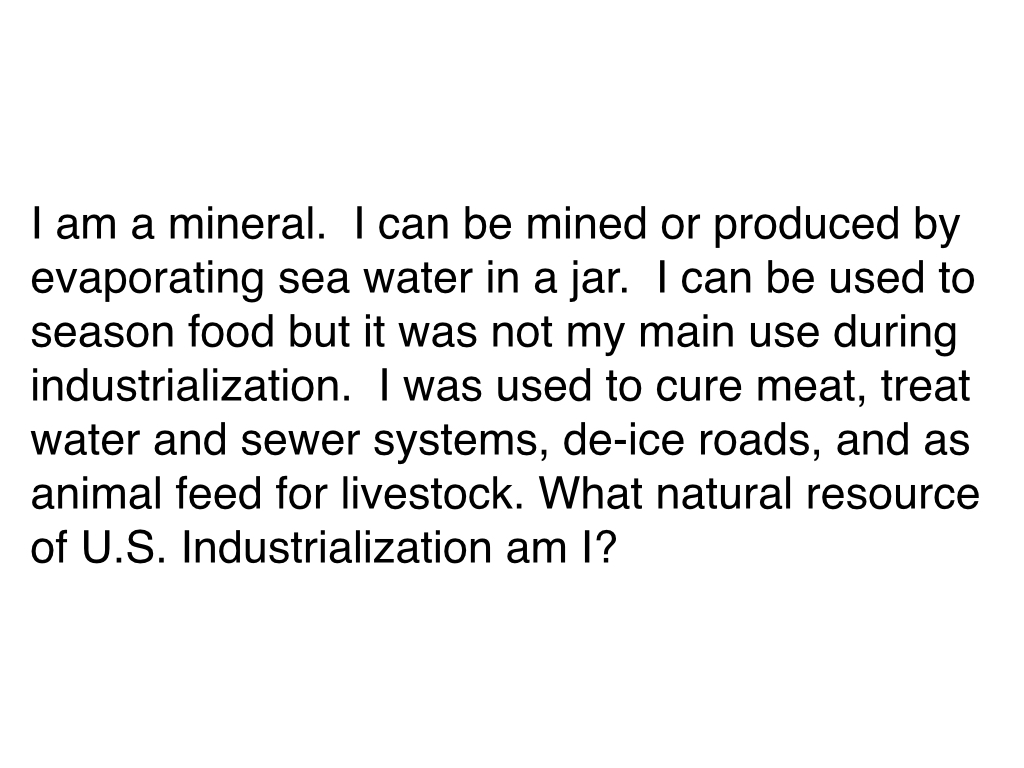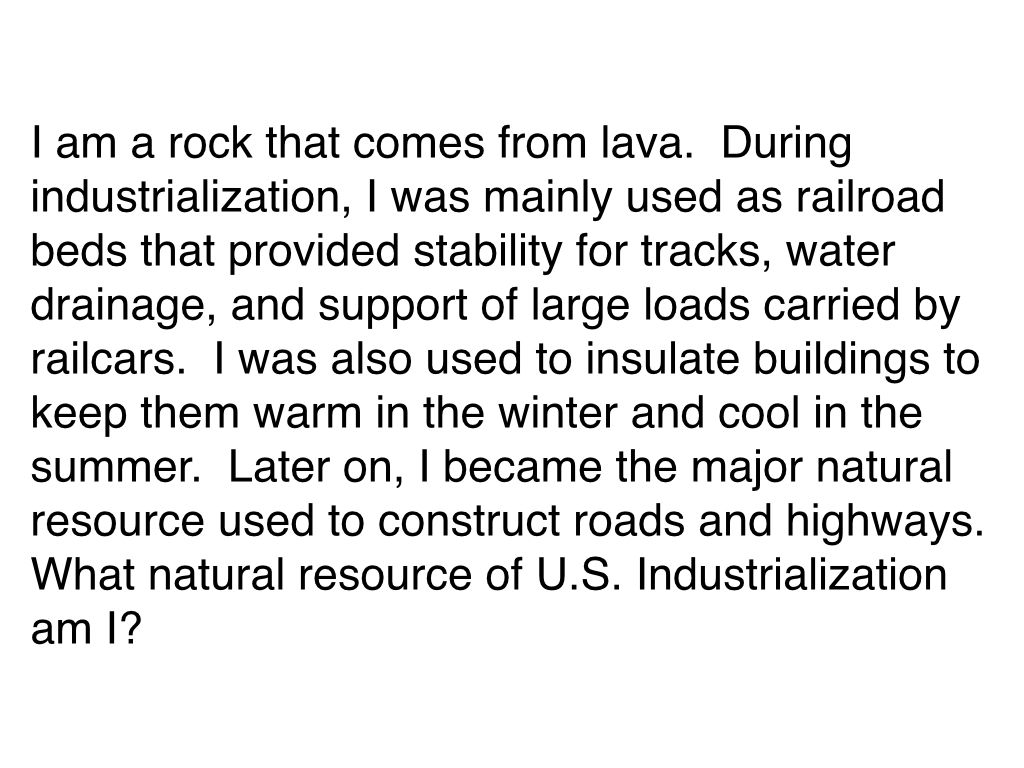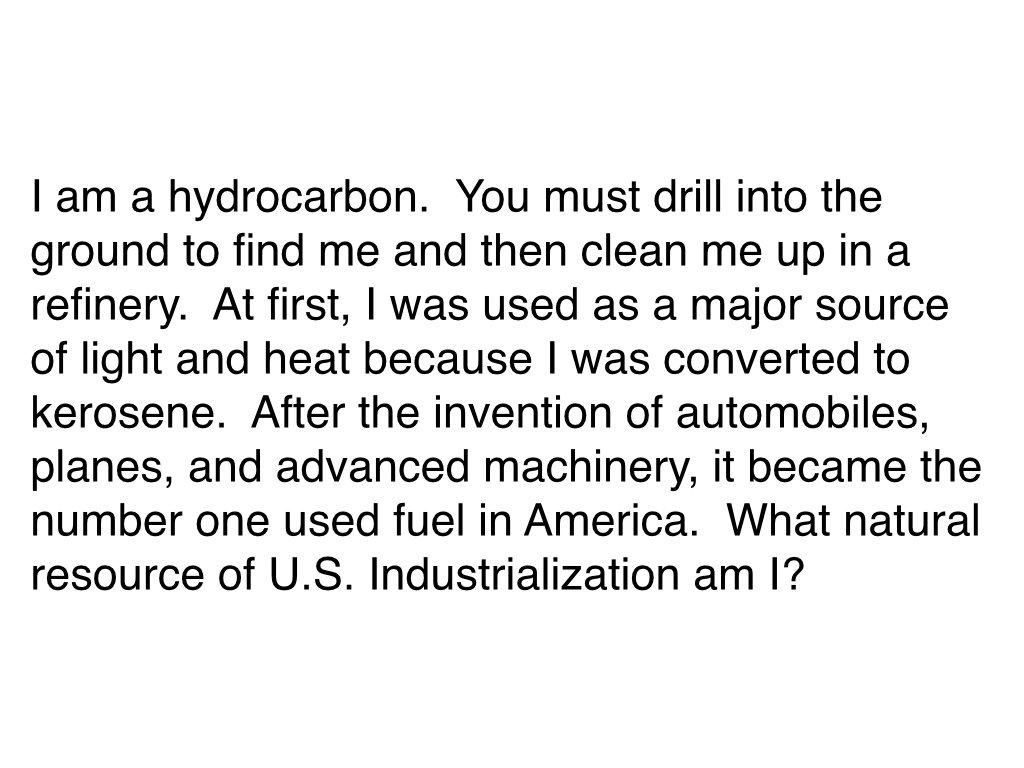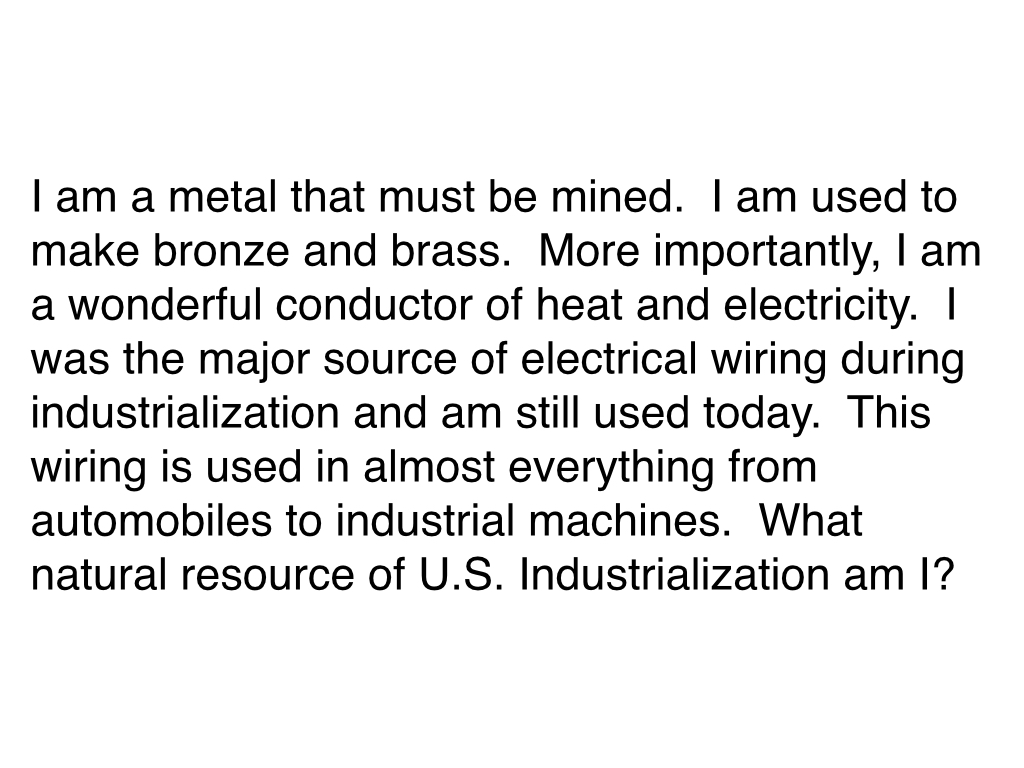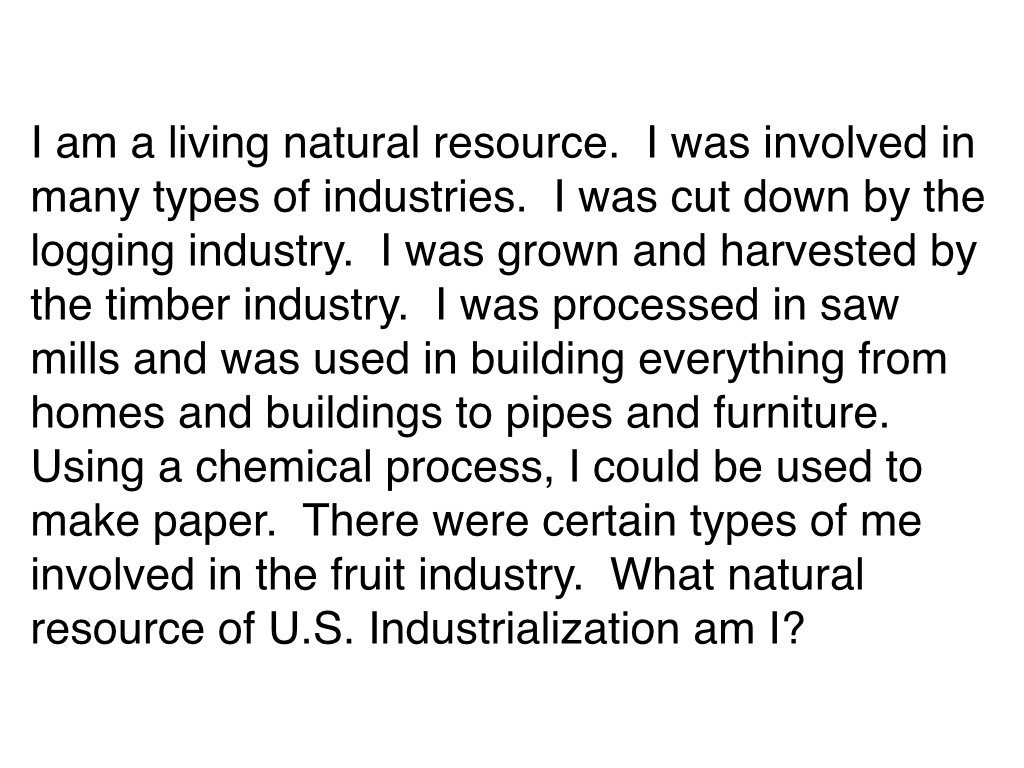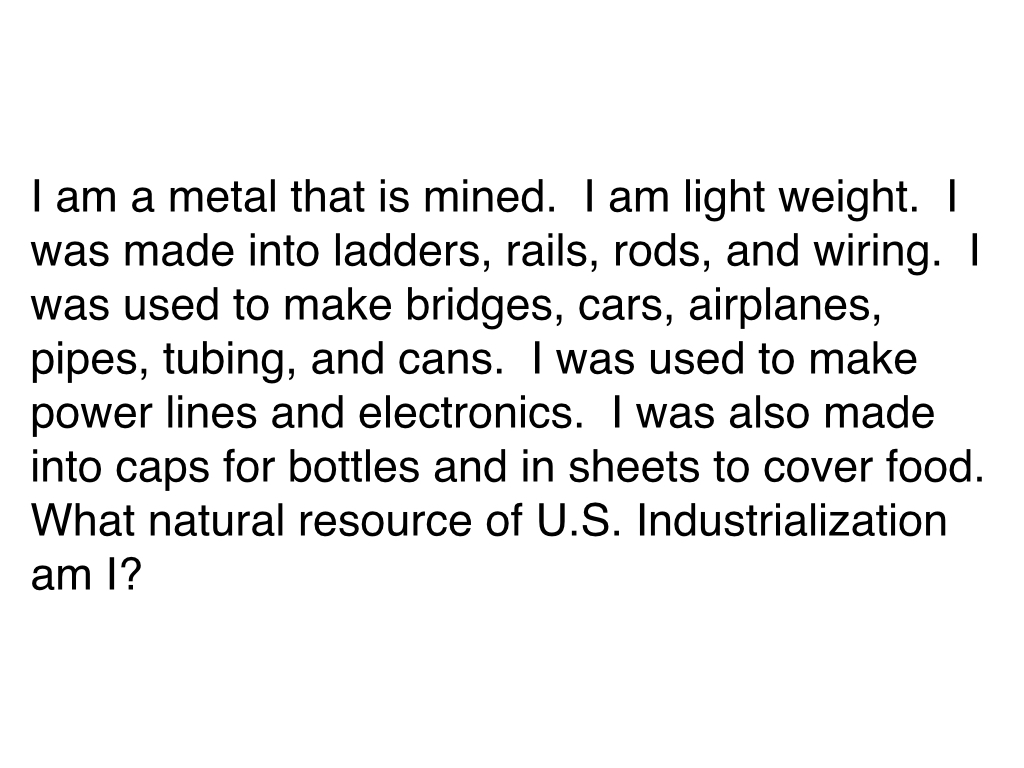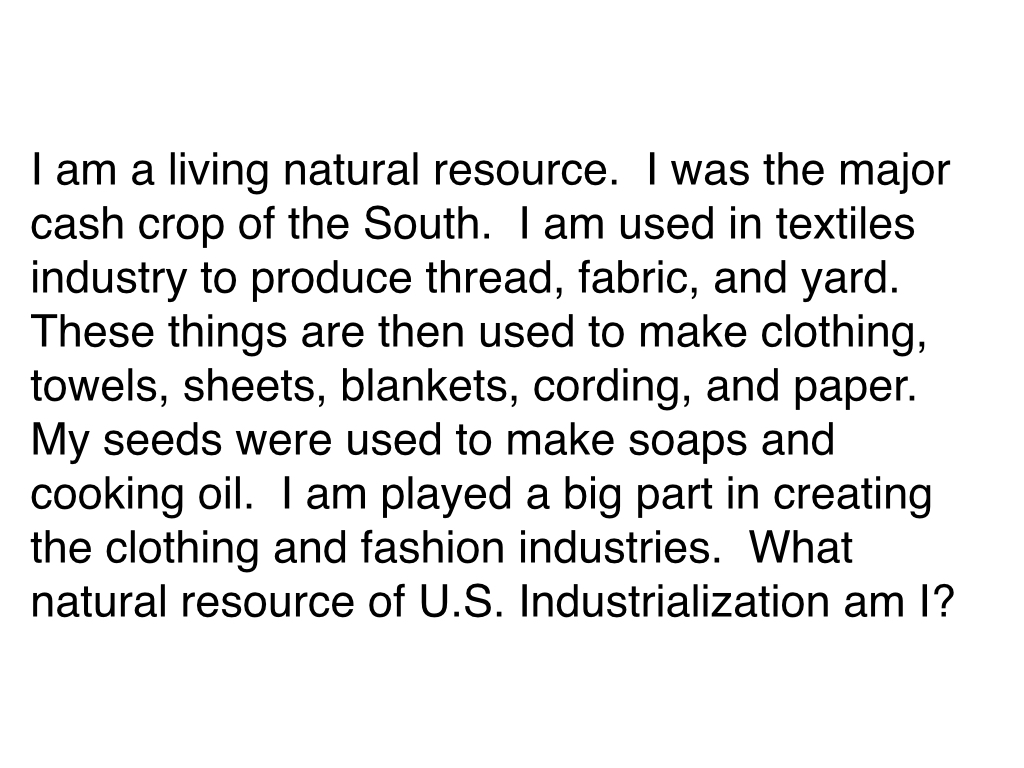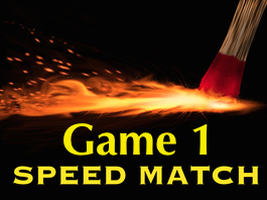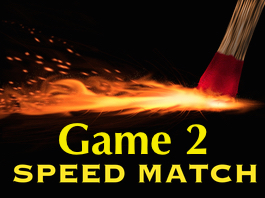UNIT 1: THE GILDED AGE
LESSON 1: INDUSTRIALIZATION
FOCUS ACTIVITY
THE LESSON MISSION

Directions: The Focus Activity is an activity where you focus your attention on what you will be learning. Each lesson has an essential question or a question that you must be able to answer by the end of the lesson to show that you understand the lesson. The mission question gives you a purpose for the lesson. It tells you exactly what you will be learning and helps you to know what you need to look for during the lesson. Your mission is to answer the following question correctly by the end of the lesson:
What was industrialization and how did it play a part in the Gilded Age of American History?

Write this lesson title in the Table of Contents of your Lesson Chronicles. Then open to the Industrialization page in your Lesson Chronicles. Write the date in the top right corner and the title of the lesson on the first line. Then write the Lesson Mission Question. You will answer this question at the end of the lesson.
To help you accomplish your mission, we are going to break the mission down. You will go through four challenges that require you to meet a target. Each target will give you the evidence you need to meet your mission. Once you've completed all four challenges and met all four targets, you will have everything you need to accomplish your mission. So, let's get started.....
To help you accomplish your mission, we are going to break the mission down. You will go through four challenges that require you to meet a target. Each target will give you the evidence you need to meet your mission. Once you've completed all four challenges and met all four targets, you will have everything you need to accomplish your mission. So, let's get started.....
GUIDED READING

Directions: Today's Challenge 1 Activity is a Guided Reading. In a Guided Reading, different volunteers read one paragraph of the passage. After each paragraph, the teacher models important strategies when reading non-fiction text, brings important information to light, and clarifies any misunderstandings. You may double click on any words that you need to be defined for you. This will highlight the word in yellow and bring up a pop up box with the definition. Important vocabulary is also in the Toolbox on the right of the reading passage.
Industrialization in the Gilded Age
CLASS DISCUSSION

Directions: In a Class Discussion, the teacher asks questions about the reading to help you gain a better understanding about what you have just learned and to make sure you understand what you have just read. The teacher will read the first question. Simply, raise your hand to answer the question or to comment on the answers that others have given.
1.) What is industrialization?
2.) Why did the United States choose to industrialize?
3.) Based on the clues in the reading, which of the following best defines the word “factory?"
A.) machines that people use to make things
B.) buildings with machines that make things
C.) people who use machines to make things
D.) businessmen who have workers who make things
4.) According to the passage, the Factory System was:
A.) Bringing machines, materials, and workers together in one place to make a product to sell.
B.) Stealing a new idea and using that idea to build a factory and make money.
C.) Crafting custom made items like shoes and guns in a small workshop by an expert craftsmen.
D.) Creating new inventions that make things faster and finding new energy sources to run these inventions.
5.) Which of these things was LEAST likely to have played a part in the growth of U.S. industries?
A.) natural resources
B.) electricity
C.) machines
D.) craftsmen
2.) Why did the United States choose to industrialize?
3.) Based on the clues in the reading, which of the following best defines the word “factory?"
A.) machines that people use to make things
B.) buildings with machines that make things
C.) people who use machines to make things
D.) businessmen who have workers who make things
4.) According to the passage, the Factory System was:
A.) Bringing machines, materials, and workers together in one place to make a product to sell.
B.) Stealing a new idea and using that idea to build a factory and make money.
C.) Crafting custom made items like shoes and guns in a small workshop by an expert craftsmen.
D.) Creating new inventions that make things faster and finding new energy sources to run these inventions.
5.) Which of these things was LEAST likely to have played a part in the growth of U.S. industries?
A.) natural resources
B.) electricity
C.) machines
D.) craftsmen

Bullseye: In your Lesson Chronicles, show that you hit a bullseye on target one. Under Challenge 1, define industrialization and briefly describe how it began in America.
CLASS SCRAMBLE

Directions: Today's Challenge 2 Activity is a whole class game called Classroom Scramble. In the game students are divided into two large groups. One group is dealt a card with the name of a natural resource that was important in U.S. Industrialization. The other group is dealt a card that describes the way a natural resource was used in U.S. Industrialization. When I say go, you need to find your match. Each person with a natural resource needs to find the person who has the card with the way that natural resource was used in industrialization. When you believe you have found your match sit down with that person. When every one has sat down we will check to see if you are correct. We will also talk about how these natural resources played a part in industrialization. I have the cards for each group embedded below.
Natural Resources |
Descriptions |

Bullseye: In your Lesson Chronicles, show that you hit a bullseye on target two. In the Challenge 2 Bullseye Box, explain how America's natural resources fueled industrialization.
AMAZING RACE

Directions: Today's Challenge 3 Activity is a game called the Amazing Race where teams race to be the first group to finish the race. In the game, your table is a team and your table will race against the other tables to be the first to finish the game first. You will use the charts of information below to play. The first game is called Memory Match. In this game, you will race to match the inventions and innovations of industrialization with the inventors and innovators that created them. When your done, you will see a time. Raise your hand so that I can come to you and record your time. Teams are awarded points based on the time it takes them to match the cards. The team with the quickest time will receive the most points. Points are awarded according to the chart below:
1st Place - 8 Points
2nd Place - 7 Points
3rd Place - 6 Points
4th Place - 5 Points
5th Place - 4 Points
6th Place - 3 Points
7th Place - 2 Points
8th Place - 1 Points
2nd Place - 7 Points
3rd Place - 6 Points
4th Place - 5 Points
5th Place - 4 Points
6th Place - 3 Points
7th Place - 2 Points
8th Place - 1 Points
The second game is called Speed Match. In this game, you will race to match the inventions and innovations of industrialization with how the invention or innovation contributed to U.S. Industrialization. When your done, you will see a time. Raise your hand so that I can come to you and record your time. Teams are awarded points based on the time it takes them to match the cards. The team with the quickest time will receive the most points. Points are awarded according to the chart below:
1st Place - 8 Points
2nd Place - 7 Points
3rd Place - 6 Points
4th Place - 5 Points
5th Place - 4 Points
6th Place - 3 Points
7th Place - 2 Points
8th Place - 1 Points
2nd Place - 7 Points
3rd Place - 6 Points
4th Place - 5 Points
5th Place - 4 Points
6th Place - 3 Points
7th Place - 2 Points
8th Place - 1 Points
After the second game, each teams points are added together. The team with the most points wins the race. This teams names will be recorded on the Amazing Race Leader Board until the next Amazing Race.
Game Icons
Information Chart

Bullseye: In your Lesson Chronicles, show that you hit a bullseye on target three. In the Challenge 3 Bullseye Box, describe the inventions and innovations that helped advance U.S. Industrialization.
MAP THE STORY
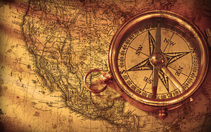
Directions: Today's Challenge 4 Activity is a mapping activity called Map the Story. In this activity, you will each get a map of the United States in the Gilded Age. I will read you the story of a dress - from gathering the raw materials - to production - to its purchase from the sales rack. As I read the story to you, you will trace the railroads on the map involved in the gathering of resources, production, distribution and sale of a dress in the Gilded Age. After this map activity, we will explore why railroads were built in the places that they were by investigating a second map. Finally, we will discuss the importance of the railroads in growing and expanding industries. The story, maps, and questions for this activity are embedded below.

Bullseye: In your Lesson Chronicles, show that you hit a bullseye on target four. In the Challenge 4 Bullseye Box, explain how railroads helped to grow and expand industries.
REFLECTION ACTIVITY

Directions: Now take a moment to think about all that you have learned in this lesson. What did you learn from all 4 Challenge Targets? Using PQA format, answer the Lesson Mission Question in your Lesson Chronicles using the information you gathered from the lesson. Remember, this helps me determine if you accomplished the mission by demonstrating that you understand how all the targets come together. Each Lesson Chronicles Entry is a 10 point grade. When everyone is done, we will go over your answers as a class. You will be allowed to make corrections or add information that is shared by others. The Lesson Mission Question is below:
What was industrialization and how did it play a part in the Gilded Age of American History?
MISSION ACCOMPLISHED
MISSION CHECK

Directions: Did you accomplish your mission in Lesson 1? Well now it's time to prove it! Complete the Mission Check Activity below. You may use your Lesson Chronicles and the Lesson Page to help you. Remember to type your first and last name and check your answers before you submit. This is a graded activity worth 50 points. Click the Mission Check Button to begin the activity!
HOMEWORK
FAMILY DISCUSSION TIME
Remember, you have homework in Social Studies every night. Your homework is to tell your family what you learned in class today. This is an excellent way to keep a good line of communication open with your parents and it is a great way to make sure you are studying a little every night.
|


